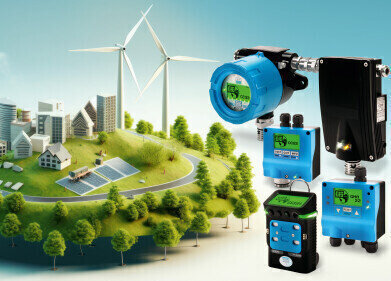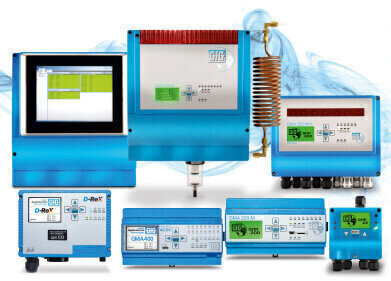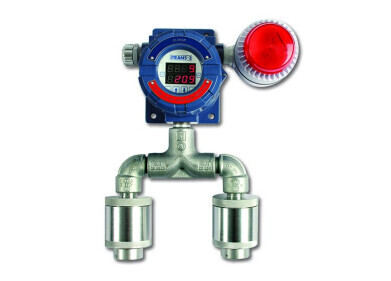Gas Detector
Providing safety to an important cause
Dec 12 2023
The world is in the process of transitioning to new, sustainable energy sources and while progress still seems too slow for many, both the use of available technologies and the development of new ones have seen a significant rise over the past few years. These trends clearly indicate that change is underway – so how do we prepare?
As the renewable energy sector is expanding and more and more people are working in the industry, occupational safety and danger awareness are more important than ever. With constant technological development the safety industry will have to rise to the challenge of providing protection to those who power our world. Gas hazards make up only one part of the potential dangers workers might face, but preventing them is essential due to their high risk.
Gas dangers in renewable energy generation
Most people’s first association with “gas dangers” will be toxic gases – which do pose a tremendous risk – but there are other hazards you will have to consider as well. Combustible gases, most of which are invisible and odorless, can cause explosions at the introduction of the smallest ignition sources. Victims of asphyxiants often don’t know they are in danger before it’s too late, as symptoms of inhaling these gases may go from slight drowsiness to respiratory arrest in only a few minutes.
There is a wide variety of renewable energy sources and wind, solar or biomass generation will of course all require very different safety concepts. But regardless of whether the converted energy stems from the sun or decomposing biomass – the production and maintenance of the products we need to harness them involves the use of dangerous gases. The manufacturing process of photovoltaic panels, for example, usually involves arsine, phosphine or silane as well as generating silicon tetrachloride when making silicon PV wafers. The dams needed for harnessing hydro energy cause artificial reservoirs to build up, which produce high amounts of methane and thus pose a risk to people in the vicinity. Green hydrogen, while extremely important for its use as a direct energy source or application in fuel cells, is highly combustible and burns with an invisible flame.
Solutions improving the safety of workers
Since we rely on the energy this sector produces, we need to ensure the safety of everyone involved in its production and supply processes. In many of them, monitoring of gas concentrations is crucial to holistic safety systems. This can either mean a fixed gas detection system in places where dangerous concentrations of gases pose a constant theat or portable, individual gas detectors for any workers entering potentially hazardous areas. Either option will guarantee that everybody in the vicinity is warned by an appropriate alarm signal (acoustic or visual) and security measures can be initiated quickly.
If you are unsure about which gas detection system is right for you, GfG’s safety experts are happy to help you and offer advice. Contact us for a free consultation or visit our website.
Digital Edition
PIN 25.3 June/July
June 2024
Analytical Instrumentation - Recent Advances In Various Bench Scale Accelerated Oxidative Testing Methods For Fuels - Petrochemical Industry: Anton Paar Solutions Streamline Processes, Reduce H...
View all digital editions
Events
Jul 30 2024 Jakarta, Indonesia
Jul 30 2024 Jakarta, Indonesia
China Energy Summit & Exhibition
Jul 31 2024 Beijing, China
Jul 31 2024 Chengdu, China
Aug 05 2024 Moon Township, PA, USA



.jpg)

















